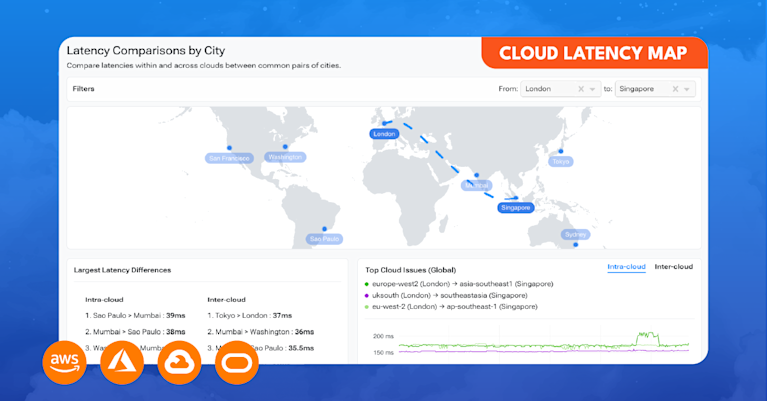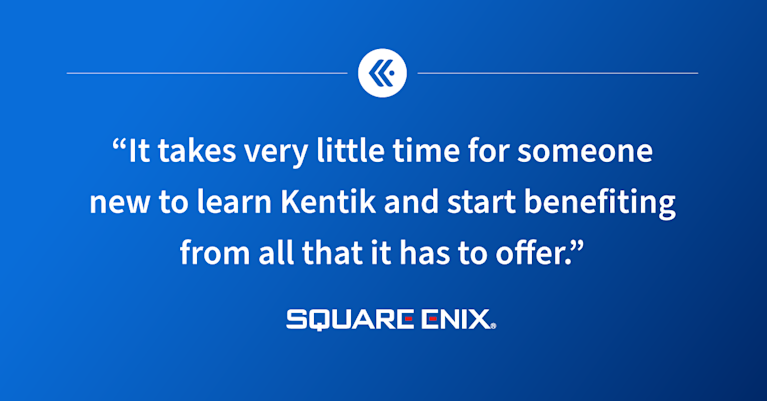Synthetic Testing and Monitoring
Test and monitor everything. Investigate what matters.
 Ensure amazing digital experiences
Ensure amazing digital experiences
- Monitor digital experience across network infrastructure, multi-cloud, and SaaS applications.
- Run page load and web transaction tests on intervals that you choose.
- Constantly monitor application performance between end users, offices, data centers, and public clouds.
 Network monitoring and testing made simple
Network monitoring and testing made simple
- See real and test traffic in the one window for monitoring clarity and reduced workload.
- Plan synthetic tests based on your actual network traffic and have them update when patterns change.
- Auto-configure tests without the toil of documenting addresses, parsing lists, or tracking changes.

 Troubleshoot performance problems
Troubleshoot performance problems
- Be alerted to performance problems and know they’re based on your real traffic patterns.
- Quickly zoom into specific tests and learn details of your traffic’s path so you can narrow down to the source of problems.
- Immediately see nodes with excessive latency or packet loss and/or jitter.
- Monitor BGP events including hijacks and path changes, route leaks, and invalid RPKI status.
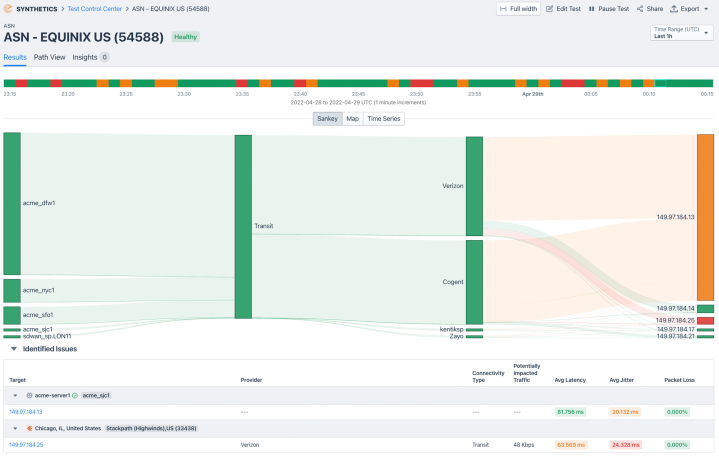
 Monitor user experience from anywhere
Monitor user experience from anywhere
- Emulate the performance of your global users from any region in public cloud providers.
- Use any of our 200+ public agents and augment with private agents in your own network.
- Test web apps using app agents, page loads, and transactions.
- Manage agents, tests and data with an API.
See the Kentik Global Synthetic Network.

 Unmatched BGP monitoring for enhanced security
Unmatched BGP monitoring for enhanced security
- Monitor BGP events related to your network including hijacks and path changes, reachability problems, route leaks and invalid RPKI status.
- Collect BGP data related to your network from thousands of vantage points.
- Click once to create BGP monitor tests and set your custom alerts.
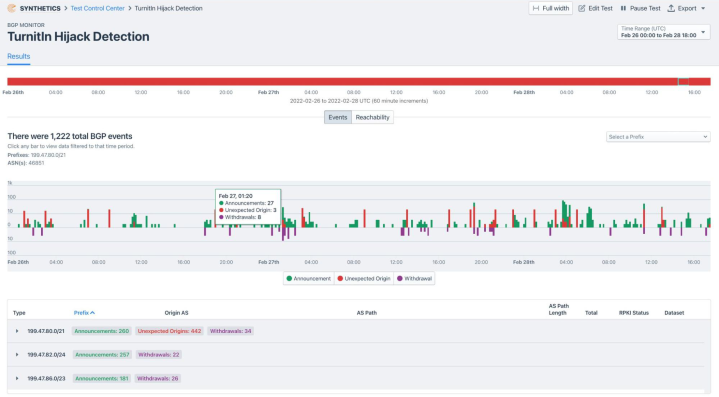
 Understand the State of the Internet at a glance
Understand the State of the Internet at a glance
- Monitor the state of SaaS applications, in and between public clouds, DNS service providers.
- Use our hundreds of agents located across the globe or easily deploy your own so that you can monitor what’s important to you.
- Quickly identify root cause — is it my infrastructure, the cloud, or an application?
- No additional cost to see all our State of the Internet results.
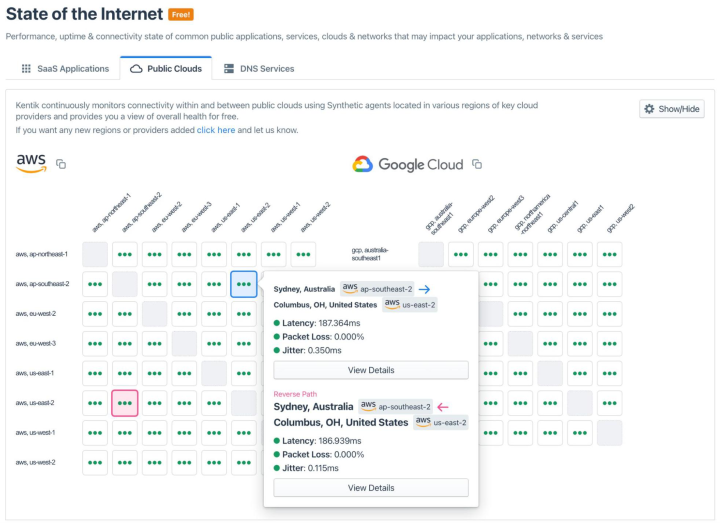
 Performance mesh test at scale
Performance mesh test at scale
- Set up complex, multi-site performance mesh tests with just a few clicks and view hundreds of results simultaneously.
- Our mesh view and visual cues show you problems at a glance.
- Click any cell to view performance metrics and drill down to the root cause of issues.
- See how you are running applications between data centers and public clouds.
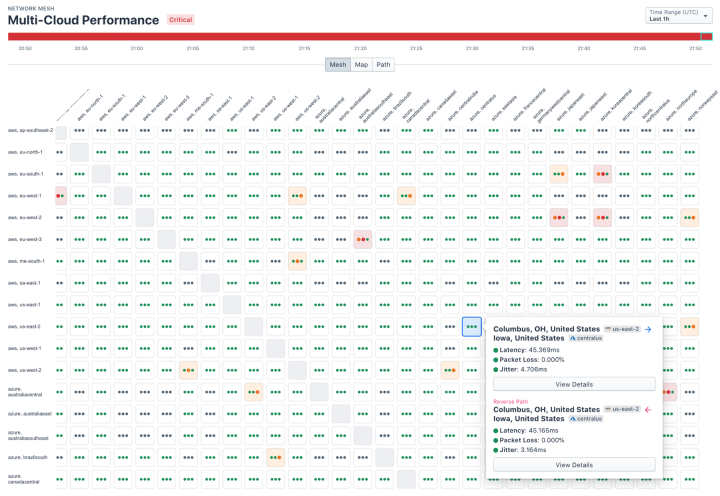
 Clear AS path visualization
Clear AS path visualization
- By monitoring BGP, you can see the AS paths currently and at any point in time.
- Logical topology maps allow you to see AS path changes that may indicate instability.
- Monitor route announcement frequency and get alerted to changes.

 DNS and website availability at a glance
DNS and website availability at a glance
- Make sure your DNS and web servers are always up so that your websites and web-based applications are always available.
- Select agents for an accurate picture of server availability, resolution time and returned results, including IP addresses and MX records.
- Intelligently configure alerts for failures, query time deviations or anomalies over time.

“Kentik’s network observability includes synthetic testing for data center and edge, in addition to flow monitoring. It’s an entire suite for the network.”
April Carter
Senior Software Engineering Manager, New Relic
Using Synthetic Testing for Better Network Observability
Explore solutions
We use cookies to deliver our services.
By using our website, you agree to the use of cookies as described in our Privacy Policy.

